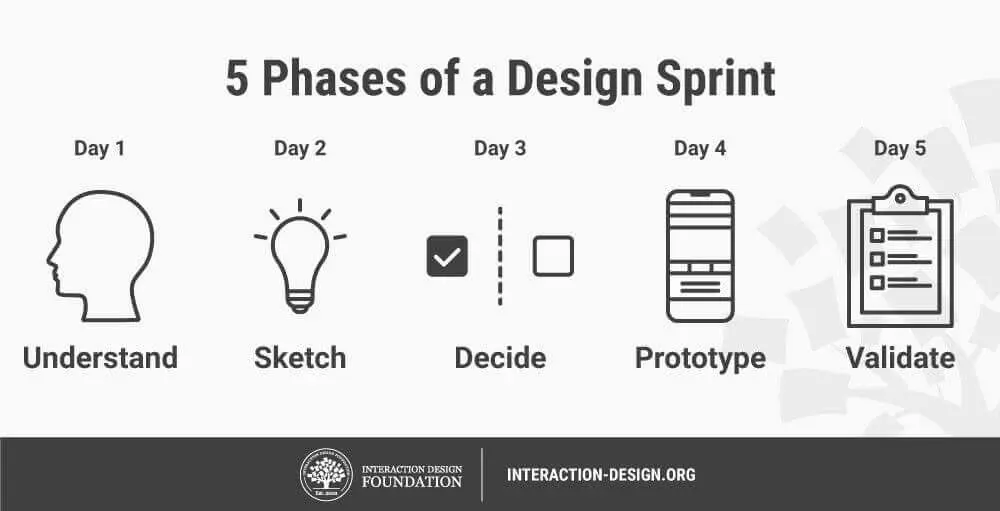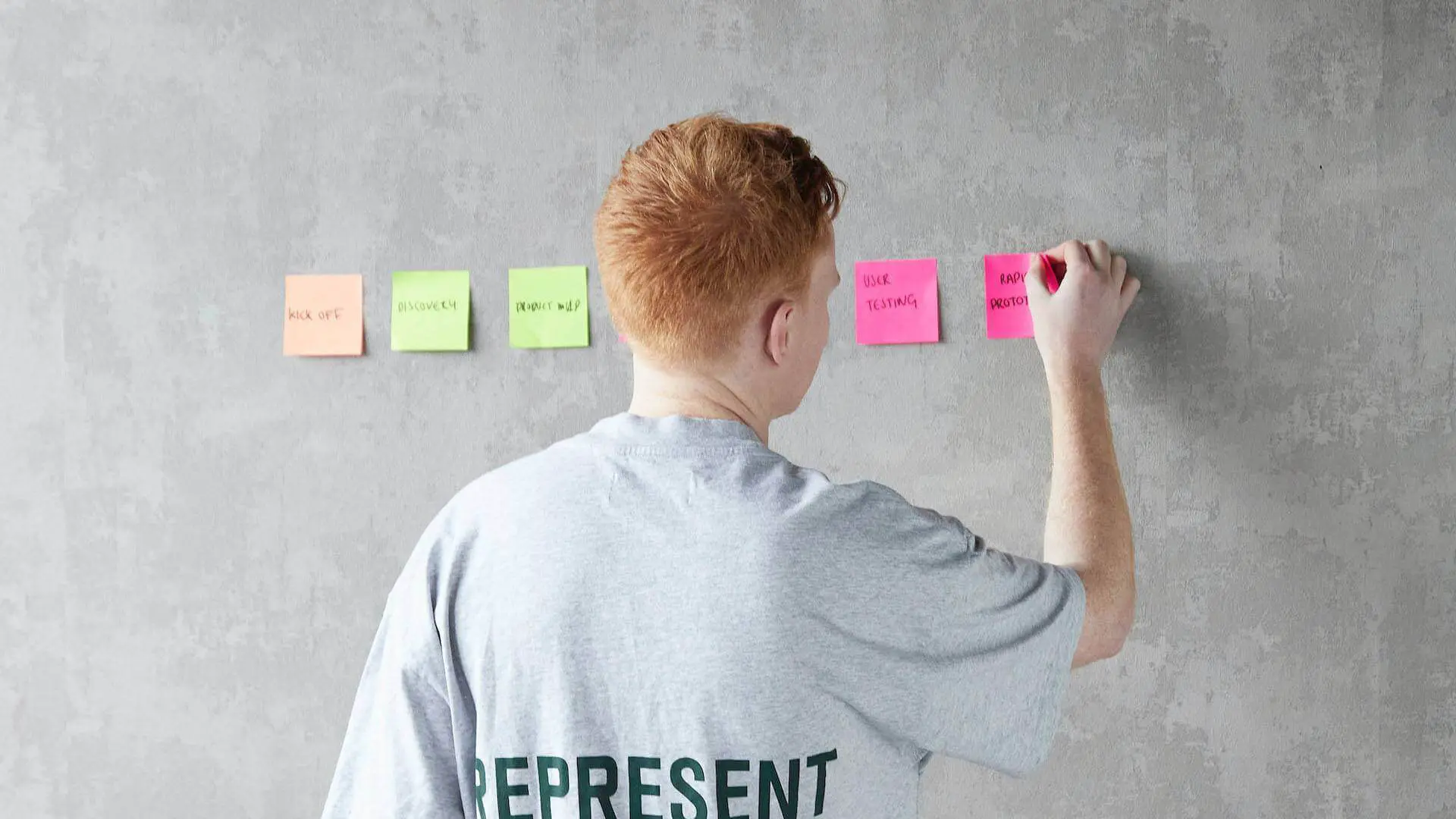Photo credit: https://www.interaction-design.org/literature/topics/design-sprints
Design Sprints for user research
Design sprints champion a user-centric approach. This makes them invaluable for understanding user needs, validating hypotheses, and getting rapid feedback. Here are scenarios where a Design Sprint becomes particularly beneficial for user research:
- Early-stage product exploration: Starting a new product or adding a feature? The sprint can validate the idea with real users, ensuring you're on the right track before significant investment.
- Tackling known user issues: Analytics hinting at user struggles? Use the sprint to identify and test potential solutions quickly.
- Venturing into new markets: For products entering unfamiliar terrains or targeting new demographics, a sprint helps understand and cater to unique user needs.
- Considering a major redesign: Pivoting or making extensive changes? Test the waters with a sprint before diving in.
- Strategy formulation: If product evolution decisions are looming, a sprint provides data-driven insights on prioritizing features or changes.
- Innovative edge: Stay ahead of competitors by brainstorming, developing, and testing novel solutions in a structured manner.
Design Sprint considerations
Combining user research and Design Sprints sounds like the ultimate recipe for success, doesn't it? But as with any powerful combination, there are some nuances to be aware of when it comes to user research. Let's uncover some of the common considerations.
- Bias beware: When you're deeply involved in a project, it's easy to hear only what you want to hear. Confirmation bias can be sneaky.
Tip: Always approach user research with an open mind. Be ready to pivot based on feedback, even if it doesn't align with initial assumptions. - Quantity vs. quality: In a sprint, there's a time crunch. But rushing user interviews or skimming over feedback can mean missing vital insights.
Tip: Prioritize depth over breadth. It's often better to have in-depth feedback from a few users than superficial input from many. - Recruiting the right users: Having the wrong participants can skew your insights. If they're not representative of your target audience, the feedback might not be relevant.
Tip: Spend time ensuring your user pool aligns with your product's target demographics. - Overloading with information: With only five days in a sprint, there's a tendency to cram in as much as possible. But overwhelming participants with too much can dilute feedback.
Tip: Focus on key functionalities or problem areas. Depth over breadth applies here too. - Ignoring non-verbal cues: During testing, a user might say one thing, but their body language or hesitations could indicate another.
Tip: Be observant. Sometimes, the unsaid or the slight frown can provide more insight than spoken words.
Wrapping up
As discussed, there are lots of business scenarios where Design Sprints can be extremely useful for user research. If you want to test the waters quickly and efficiently it may be time to give Design Sprints a go.



